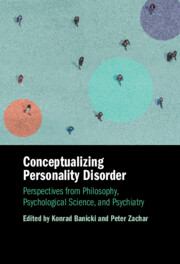 Conceptualizing Personality Disorder
Conceptualizing Personality Disorder from Part II - Contemporary Approaches to Traditional Conceptual Perspectives
Published online by Cambridge University Press: 25 June 2025
This chapter describes the value of using Contemporary Integrative Interpersonal Theory (CIIT) to understand the self and social impairments that define personality disorders as a group. CIIT’s major tenets are summarized, with a particular emphasis on elaborating how the self and self-functioning are an integral part of interpersonal experience and expression. A generic definition of adaptive interpersonal functioning is provided along with a demonstration of how CIIT can accommodate specific constructs and diagnoses using borderline personality disorder and narcissism as examples.
To save this book to your Kindle, first ensure no-reply@cambridge.org is added to your Approved Personal Document E-mail List under your Personal Document Settings on the Manage Your Content and Devices page of your Amazon account. Then enter the ‘name’ part of your Kindle email address below. Find out more about saving to your Kindle.
Note you can select to save to either the @free.kindle.com or @kindle.com variations. ‘@free.kindle.com’ emails are free but can only be saved to your device when it is connected to wi-fi. ‘@kindle.com’ emails can be delivered even when you are not connected to wi-fi, but note that service fees apply.
Find out more about the Kindle Personal Document Service.
To save content items to your account, please confirm that you agree to abide by our usage policies. If this is the first time you use this feature, you will be asked to authorise Cambridge Core to connect with your account. Find out more about saving content to Dropbox.
To save content items to your account, please confirm that you agree to abide by our usage policies. If this is the first time you use this feature, you will be asked to authorise Cambridge Core to connect with your account. Find out more about saving content to Google Drive.